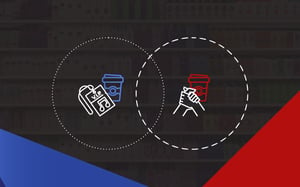To remain relevant in today’s oversaturated retail industry, retailers need to look at tailoring their product assortments to their target market. In fact, planning localised assortments should be a prerequisite for all retailers since they yield far superior results when compared to haphazardly picking and choosing products to place in your store.
After all, you’re looking to increase customer satisfaction as well as the overall performance of your store. That means doing everything you can to make that happen. But what about the consideration for transferable demand?
A look at examples of transferable demand

1. Exclusivity
Products with high levels of exclusivity to your store have lower levels of transferability. In other words, if a shopper is suddenly unable to purchase a product, which is exclusive to your store, then they may search for it at another retailer. This would put the category at risk.
It would also damage any reputation that you’re attempting to build as the go-to retailer for that and other products.

2. Shopper loyalty
Shoppers who are loyal to particular products will easily become frustrated if it is not available and are very likely to leave your store and end up searching for the product elsewhere.
By measuring your shopper’s loyalty to particular products, you can focus on prioritising high loyalty products over low loyalty products when deciding on which products to include in your assortments.
Transferable demand must be part of your assortment planning strategy
While there are plenty more examples of transferable demand, the purpose of this blog isn’t to cover them all.
Rather, this piece is meant to impart the fact that transferable demand should be considered as part of your localised assortment planning strategy.
Having said that, when it comes to summing up the prize of mastering transferable demand, it can be done by asking yourself these two questions:
- Can you reduce the number of products listed in a category or sub-category, which will reduce your inventory costs, without negatively impacting the category?
- If you decide to remove a product from a category or sub-category, can the demand for that product be transferred to another product? Or will the shopper leave your store without buying?
Planning a localised assortment can be challenging at the best of times, and it can leave you overwhelmed. However, if you don’t consider the above questions carefully during the assortment optimisation process, the category will be placed at risk.
The four pillars of assortment planning
To better plan localised assortments, there is a need to focus on the pillars that make up your assortment planning. In no particular order, they are Data, Process, Assortment Planning Software, and People Skills.
Let’s break them down.

Data
For your localised assortment plans to be effective, they need to be based on data. And not just any data, but the right data.
Therefore, if you want to create a data-driven assortment using software, you need to first source, clean, and consolidate the following data:
- The retailer’s POS data. This must be in the most granular form.
- Store cluster groups. These are your stores that are grouped by both format and other similarities.
- Store fixture data. These are your gondola measurements as well as your current planograms and/or realograms.
- Your external market data.
- Your loyalty card data.
- Your product data.

Process
During the assortment planning process, it is expected that your assortment variety will result in an increase in your inventory costs. This is why it’s so important to optimise your assortments.
However, when it comes to assortment optimisation, phrases such as “too complicated” and “difficult to implement” often crop up. Fortunately, the reality is that it isn’t actually that hard.
So long as you have the right tools, the right skills and the right process in place, it can be achieved without much fuss. You can start doing this by cleaning your data and consolidating it before nailing down your merchandising principles, aligning your merchandising strategies with your assortment planning strategy and then using software to apply it.

Assortment planning software
Speaking of software, without it, planning a localised assortment becomes that much harder to do. That’s not to say that it can’t be done. However, it will take a lot more time to complete and the chances are good that there will be errors.
In using assortment planning software, you save both time and money since your output will be that much more accurate.
If the software is good enough, it will also be integrated with your shelf and floor planning software and allow you to plan localised assortments so that the right mix of products will be offered to the right shoppers.

People skills
The skills required to successfully plan localised assortments are in short supply. Furthermore, it is not efficient for strategic decision makers to end up doing this task themselves.
Instead, it is much more valuable for retailers to outsource this function to experts who have developed this skill over time.
The strategic decision maker is then freed up to focus on higher level strategy and to ensure that their brand strategy is communicated and reflected in the localised product assortment plans.
Conclusion
The positive impact that assortment planning can have on stores should never be understated. When done right, retailers can provide their customers with the products that they want and when they want them. They’ll also stand a better chance of retaining their customer’s loyalty when compared to a fellow retailer who decides not to implement a localised assortment plan.
*Editor’s Note: This blog article was updated on 27 June 2017 for accuracy.


